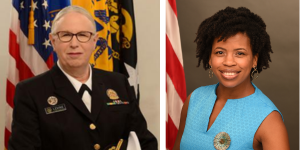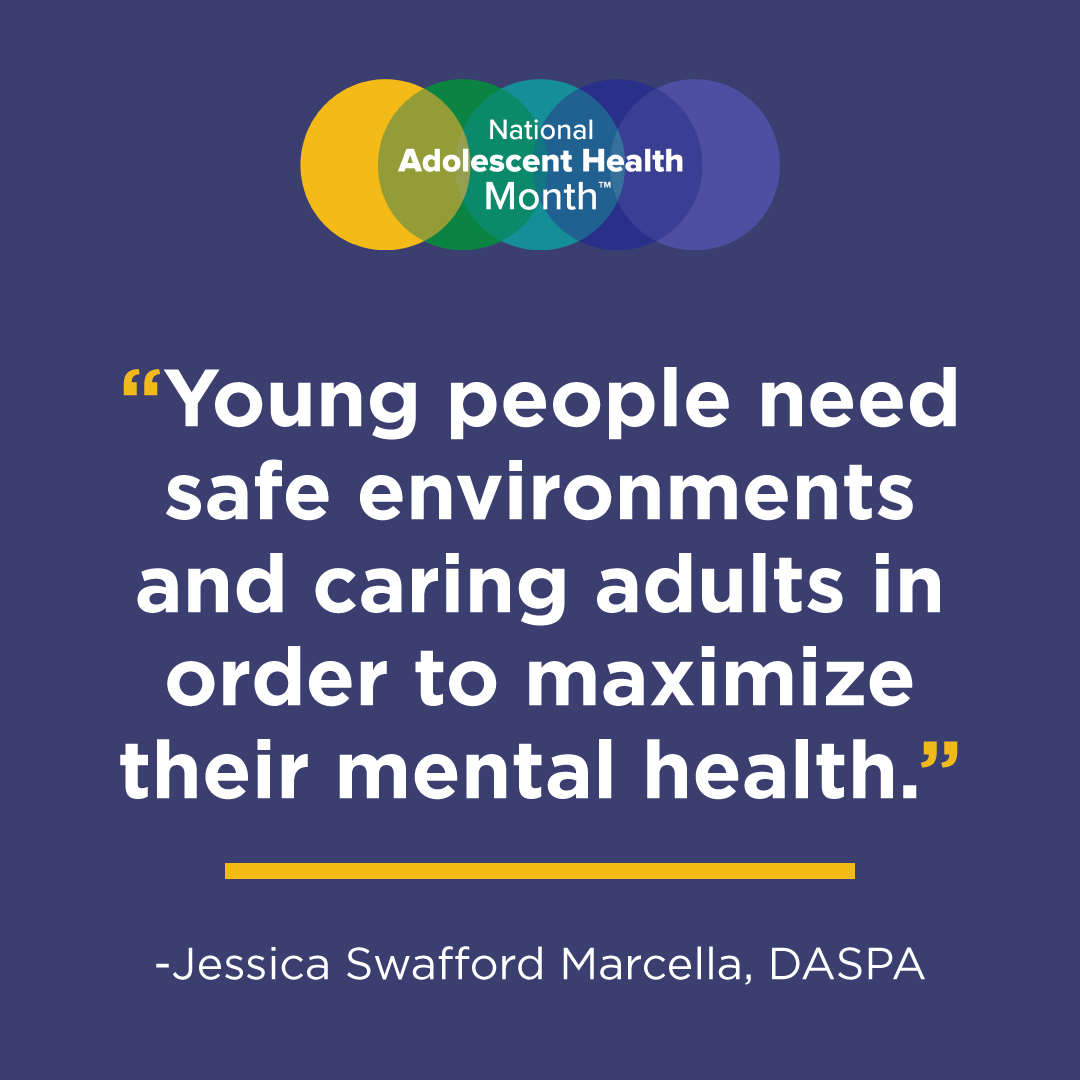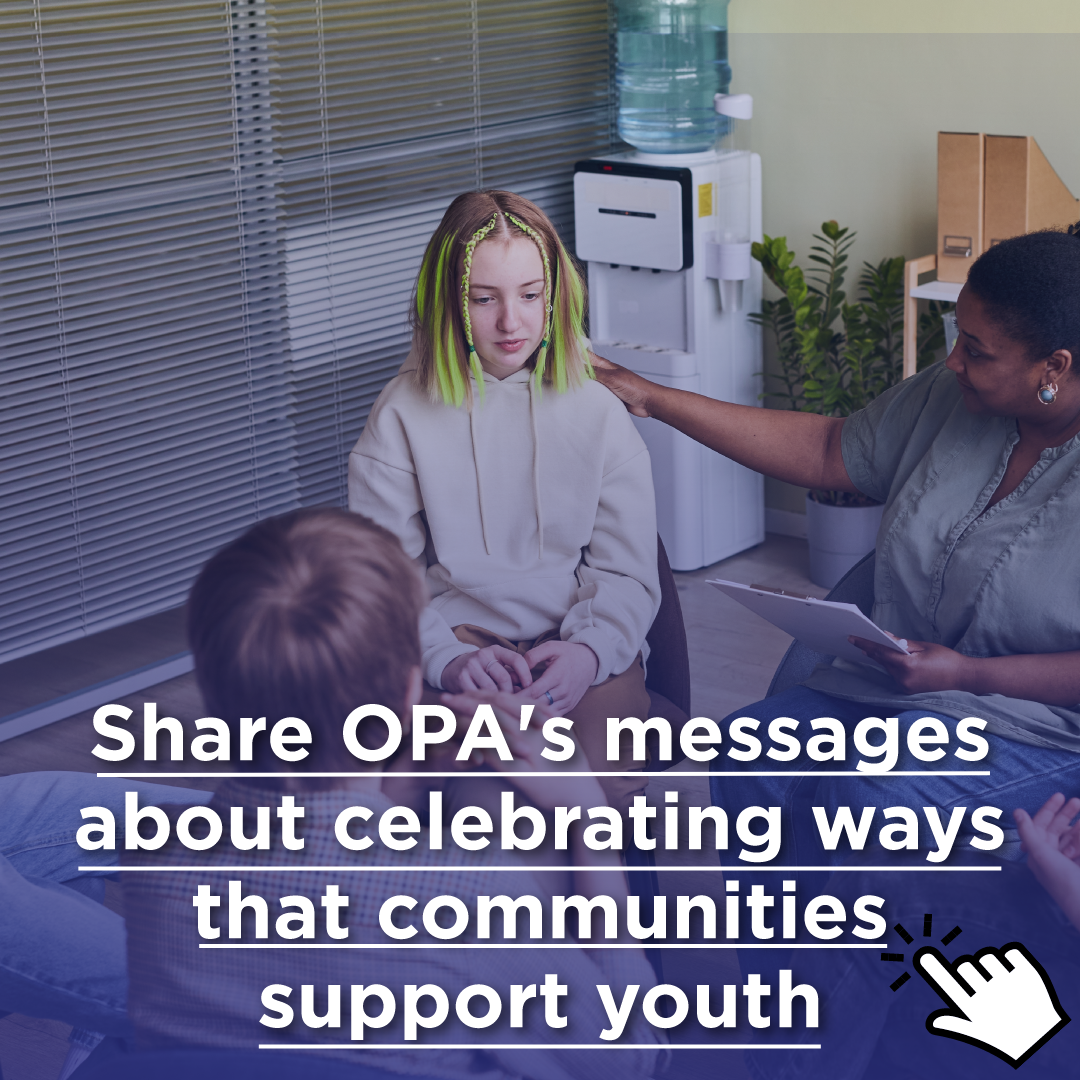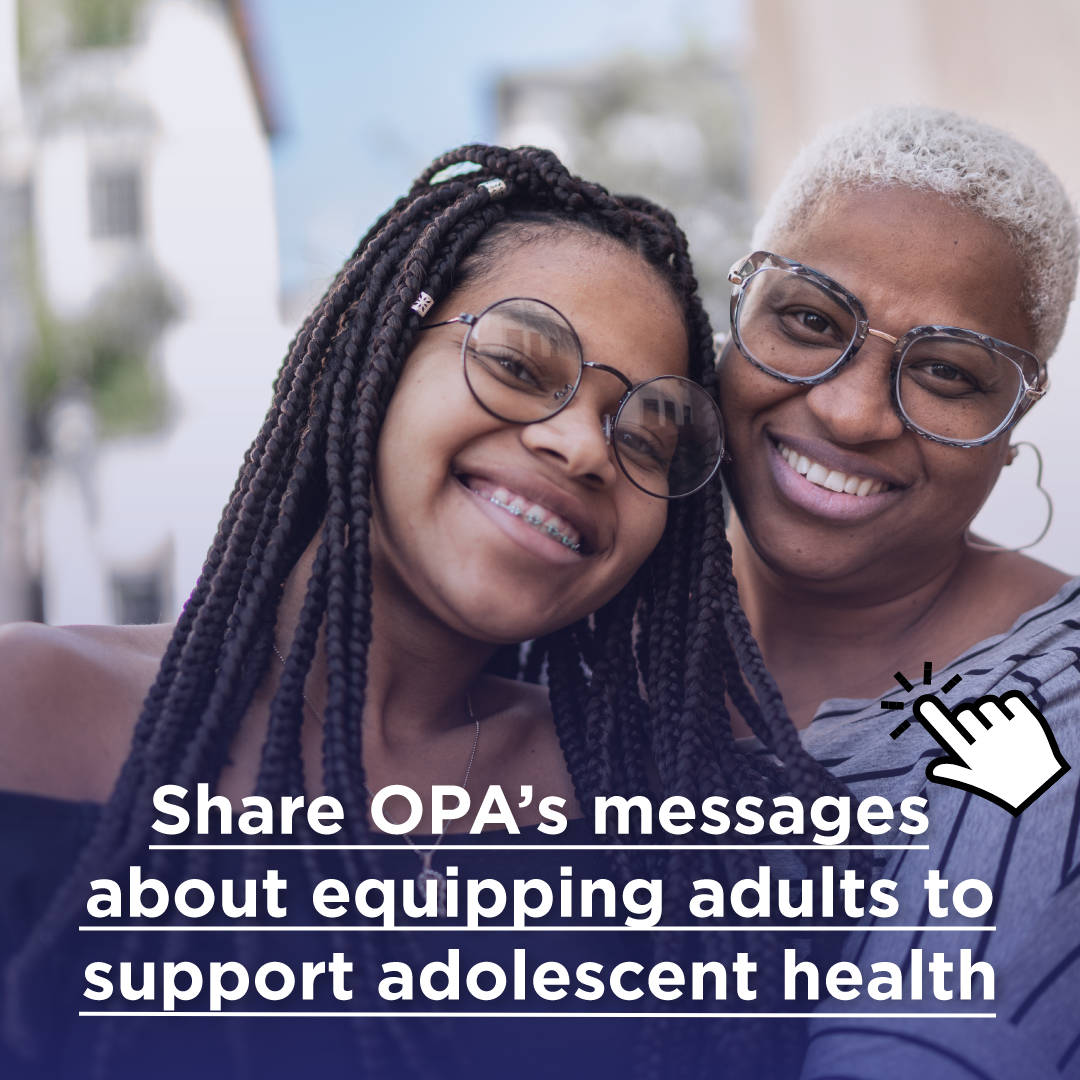
Overview of NAHM
National Adolescent Health Month™ (NAHM™) is a health observance hosted by the HHS Office of Population Affairs (OPA) each year in May. This annual observance has emphasized the importance of building on young people’s strengths and potential, encouraging meaningful youth engagement in adolescent health activities, and highlighting key topics in adolescent health.
Adolescent health involves many aspects of health and well-being, including sexual and reproductive health, mental health, community support, and the role of caring adults.
The NAHM 2023 themes were:
OPA recognizes that investing in adolescent health and well-being will generate a “triple benefit” for society: health for young people today, a healthy adult life, and better health for the next generation.
During NAHM and all year long, we must connect youth to services and opportunities that build on their strengths and potential.
A Message from Admiral Rachel L. Levine
HHS Assistant Secretary for Health Admiral Rachel L. Levine invites everyone to celebrate NAHM and to "provide the environments and supports that help young people grow and thrive in a healthy way."
HHS Statements for NAHM 2023
To mark the start of May and National Adolescent Health Month, Assistant Secretary for Health Admiral Rachel Levine and Deputy Assistant Secretary for Population Affairs and Director of the Office of Adolescent Health Jessica Marcella released the following statements.
Read the trademarking guidance before using the NAHM logo, name, or acronym. Contact opa@hhs.gov for assistance.
Weekly Themes
NAHM themes allow participants to engage with the many facets of adolescent health. OPA will announce themes for 2024 in early spring 2024.
NAHM 2023 addressed the following themes.
Week 1, May 1, 2023
Expand sexual and reproductive health information and services
Better information and improved access to services will help adolescents—with the support of their parents and caregivers—make informed decisions about their sexual and reproductive health and well-being. Parents and caregivers can help young people navigate the health care system when they transition from pediatric to adult health care.
Youth-serving professionals and health care providers also play an important role in connecting young people with sexual and reproductive health services and giving them accurate information. Youth-serving professionals help adolescents build life skills and set goals for healthy futures. Health care providers can make preventive services more accessible and culturally relevant to young people across the country. Health care providers can also ensure opportunities for confidential, one-on-one conversations and encourage youth to involve their parents or caregivers while also respecting their privacy.
Week 2, May 8, 2023
Promote self-care to support mental health
The COVID-19 pandemic highlighted the importance of addressing mental health for today's young people. The Center for Disease Control and Prevention’s (CDC) Youth Risk Behavior Survey Data Summary & Trends Report: 2011-2021 shows that poor mental health and suicidal thoughts and behaviors are increasing among 9th through 12th grade students. Community organizations, governments, families and caregivers, employers, and young people can all be part of the solution to improve youth mental health.
One way adults can support mental health is by sharing and facilitating self-care practices that young people can use in their daily lives to manage stress, regulate emotions, sustain energy levels, and prevent or treat illnesses. Communities, schools, and youth-serving professionals can make safe spaces, share stress management and mindfulness strategies, and offer virtual or mobile locations for accessing mental health and other essential health services.
Week 3, May 15, 2023
Celebrate ways that communities support youth
Teachers, coaches, and school administrators can employ a positive youth development approach to engaging young people. Building on adolescents’ strengths, communities can support youth and promote positive outcomes. Programs that involve youth are proven to be more effective at engaging them and have a greater impact. Schools can provide health education, connect young people to services, and make school environments safer for learning and recreation.
This week of NAHM celebrates communities working to advance adolescent health and opportunities for youth. OPA is highlighting the accomplishments of grantees and partners that elevate youth voice and prioritize meaningful youth engagement, build on young people’s strengths and talents, improve access to services in various settings, and make services and supports more youth friendly. OPA’s grantees are designing and evaluating creative solutions for improving adolescent health.
Week 4, May 22, 2023
Equip adults to support adolescent health
The environment where adolescents live, go to school, work, and play impacts their health and well-being. Communities—including teachers, coaches, mentors, and other youth-serving professionals—support young people as they develop into healthy adults. Caring adults need reliable information and resources to support, advise, and care for young people.
All adults, whether they live with youth or not, have important roles to play in providing support to young people. Positive connections with adults can protect youth from many risk behaviors and negative health outcomes. These connections can also assist young people as they develop and transition to young adulthood. Beyond positive connections, adults also shape young people’s environments through the policies they support, the communities they build, and the systems they create.
Voices from the Field
OPA’s grantees are working to support all components of adolescent health. Teen Pregnancy Prevention program grantees serve almost 200,000 youth each year. Nearly 20 percent of all Title X family planning clinic grantee clients–or approximately 50.8 million youth each year—are adolescents.
The Reproductive Health National Training Center (RHNTC) highlights the work that OPA grantees are currently doing in the field. Grantee spotlights tell the stories of grantees who have implemented innovative solutions to tackle common issues and strengthen their work.

TPP Grantee Spotlights

Benefits of Partnering with Title X Clinics: One TPP Project’s Perspective
Learn how one TPP grantee partnered with two Title X clinics to expand supportive services and improve adolescent-friendly services.
Youth Talk, OPA Listens
Authentic youth engagement in programs provides adolescents with opportunities for growth and self-expression and informs programs about how to better meet the needs of youth.
Youth Create!

OPA has sought input from youth participants and featured their artwork as part of OPA’s Youth Create! initiative to amplify youth voice. The Youth Create! galleries share young people’s responses, which ranged from original poems, essays, artwork, and videos.
Listen Up!

Youth Listening Sessions (YLS) offer an opportunity to meaningfully engage youth, signal that their opinions are valuable, and incorporate their voices into program discovery, planning, implementation, and evaluation.
What It's Like
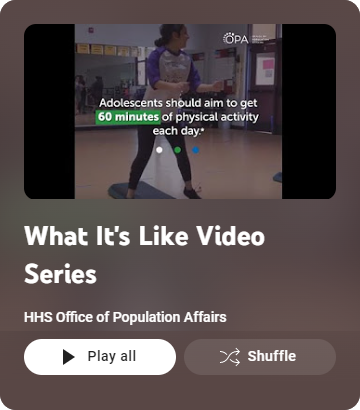
Learn What it’s Like to be a young person today. OPA produced the “What It’s Like” video project to share adolescent perspectives on health from across the United States. What the entire What it's Like series on OPA's YouTube channel.
National Adolescent Health Month™, NAHM™, and the NAHM logo are trademarks of the U.S. Department of Health and Human Services. Use of these marks without prior approval by HHS is strictly prohibited.
 An official website of the United States government
An official website of the United States government

